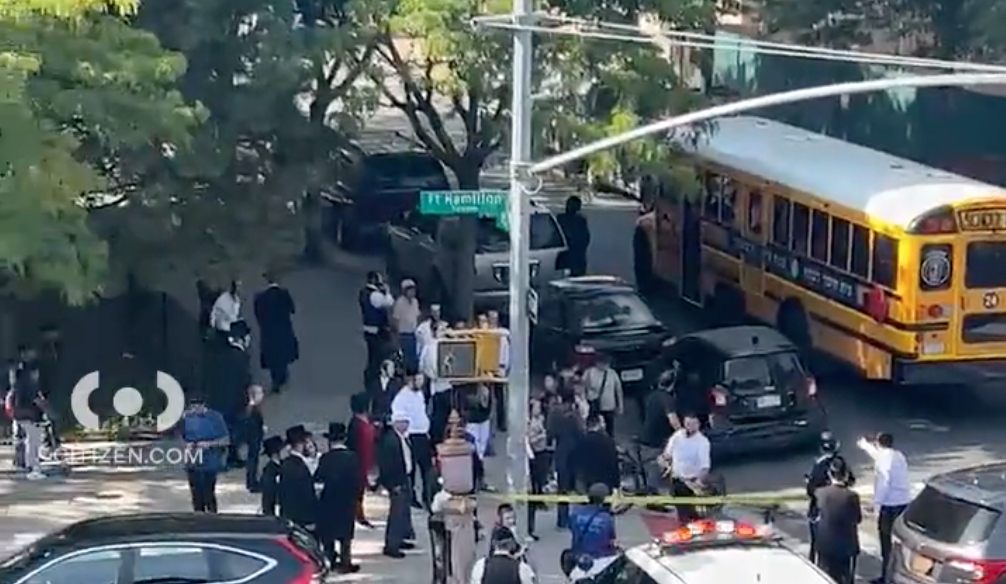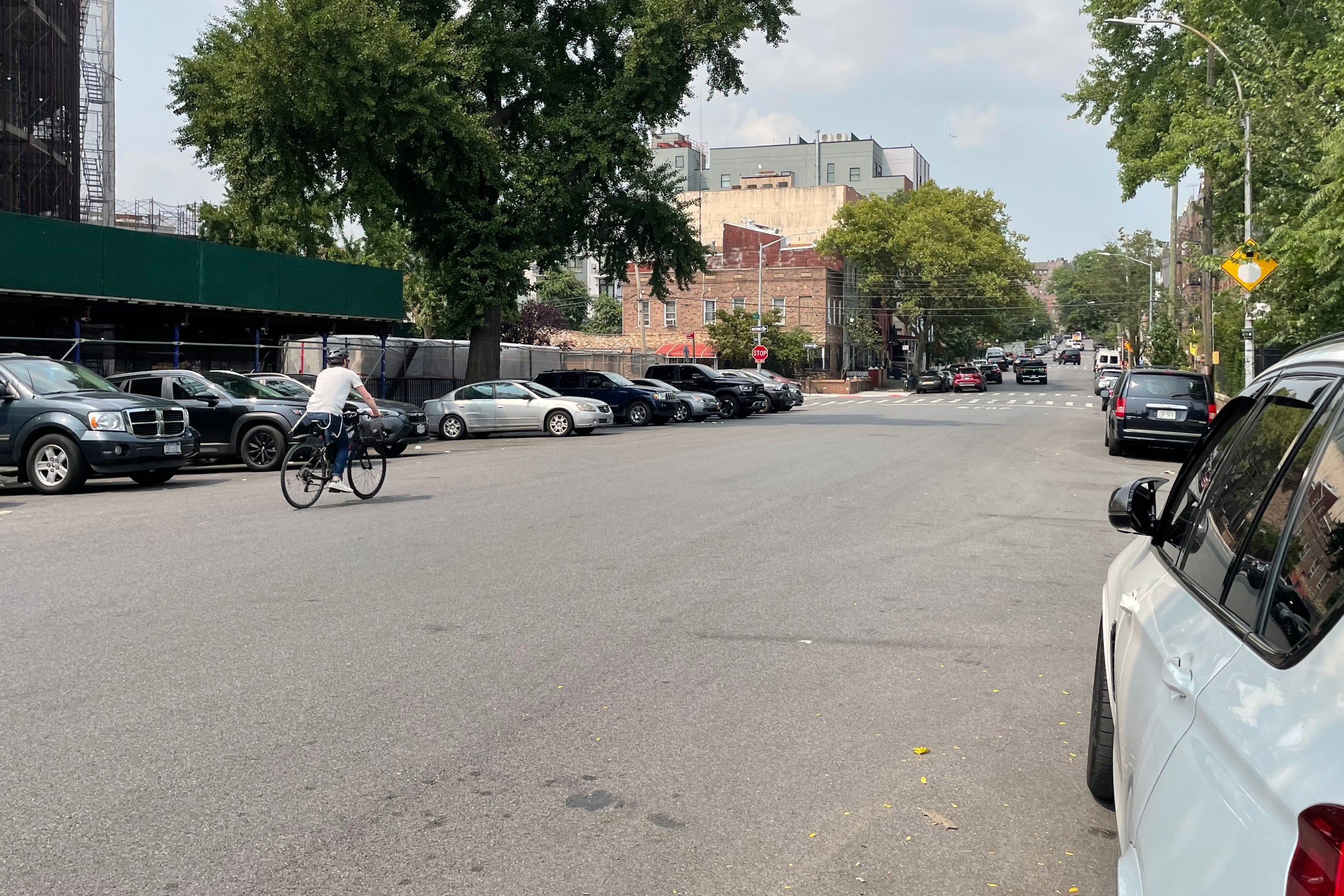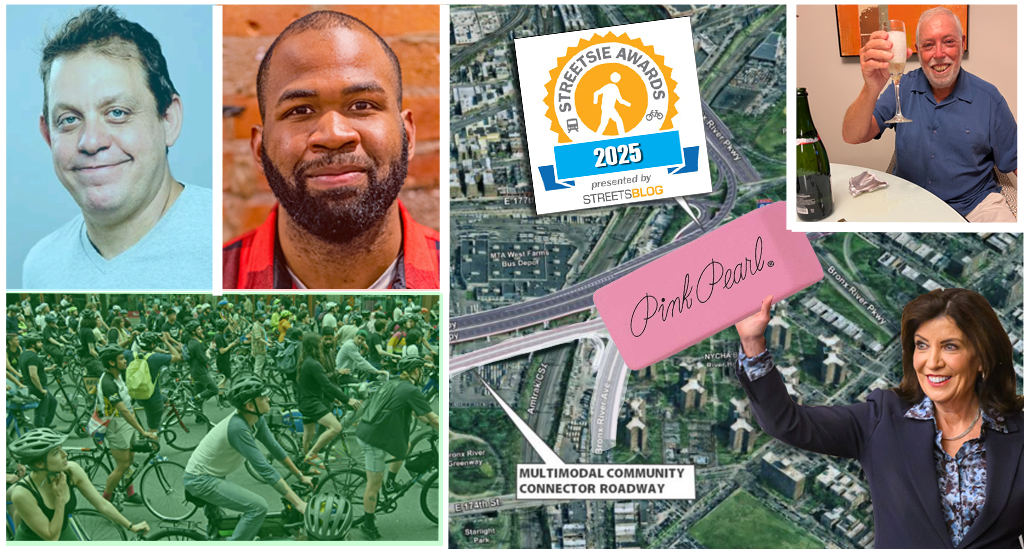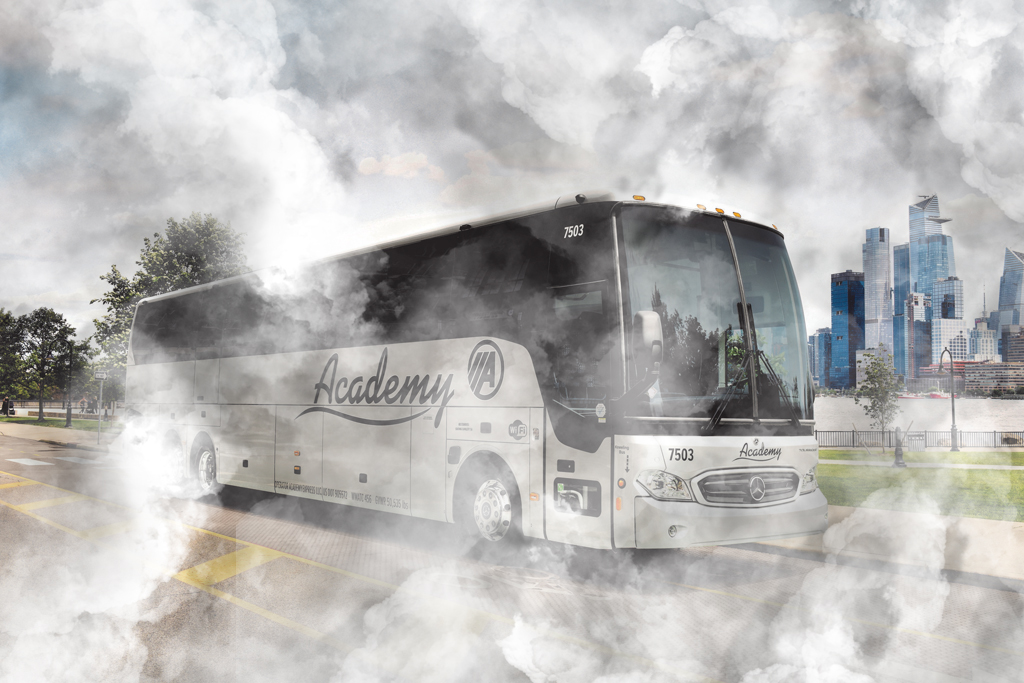A Brooklyn man became the 24th cyclist to die on New York City streets this year after a school bus driver struck him while turning right off Fort Hamilton Parkway on Thursday afternoon — hours after a right-turning school bus driver sent three people to the hospital in Prospect Heights.
Bensonhurst resident Luis Perez-Ramirez, 44, was biking south on Fort Hamilton Parkway just before 3:15 p.m., when a 66-year-old yellow bus driver traveling in the same direction turned right at 41st Street and struck the cyclist, according to police.
Paramedics brought Perez-Ramirez to Maimonides Hospital, where he died.
Cops did not arrest the driver, who stayed on the scene and was "free to go after the investigation," CBS reported. The bus was transporting 20 girls under the age of five from a local yeshiva, the Daily News reported.
The area’s Council Member, Shahana Hanif, broke news of the crash late Thursday.
We’re currently in touch with the 66th Precinct about a crash on 41st and Fort Hamilton Parkway. A cyclist was hit by a school bus today and rushed to the hospital. We’ll share updates to the community with more information when we have it.
— Council Member Shahana Hanif (@CMShahanaHanif) September 21, 2023
Perez-Ramirez was the 24th cyclist killed on New York City streets so far in 2023 — outpacing every single year since former Mayor Bill de Blasio launched Vision Zero:
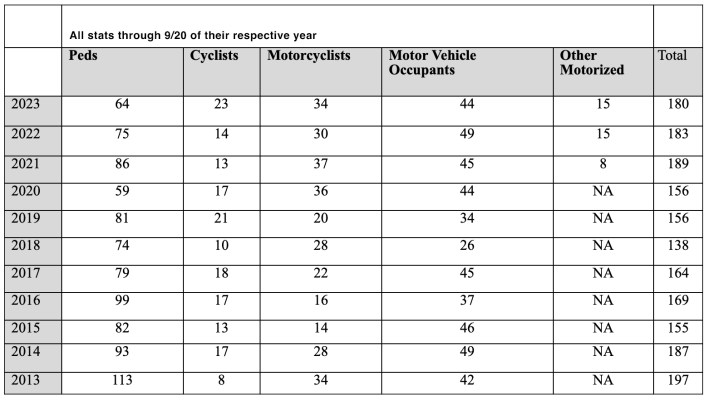
The tragic crash followed a similar incident elsewhere in Brooklyn earlier Thursday involving a right-turning school bus driver. In the crash, which was previously reported by Streetsblog, the bus driver plowed into a cyclist traveling with two kids on the busy Bergen Street school bike route in Prospect Heights.
The bus that killed Perez-Ramirez on Fort Hamilton Parkway has a record of dangerous driving in the area, including one speeding ticket speeding in July at Fort Hamilton and Bills Place, and another last November just four blocks away from Thursday's fatal crash at 37th Street, according to public records.
Fort Hamilton Parkway has a protected bike lane going southwest from Prospect Park that abruptly ends before Green-Wood Cemetery. The city's cycling maps direct cyclists onto nearby 12th Avenue, which has an unprotected bike lane, but many opt for the direct route along the cemetery. The only truly protected path for cyclists in the area is Ocean Parkway, which only goes north and south.
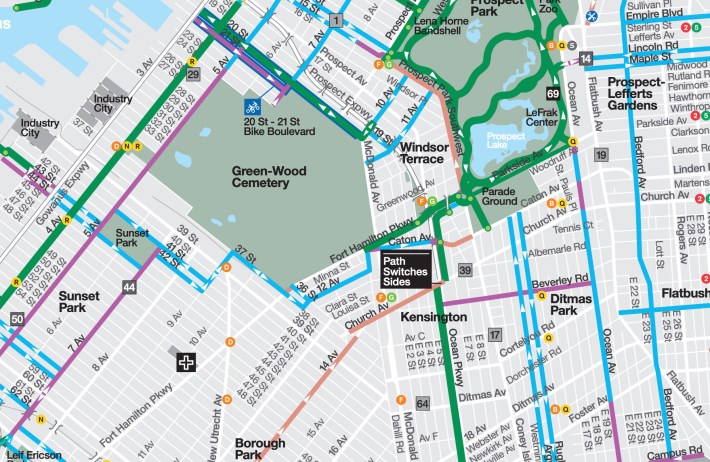
The bike lane's terminus on Fort Hamilton matches up with the beginning of Brooklyn Community Board 12's jurisdiction, which has logged a whopping 929 reported crashes so far this year injuring 508 people — nearly two a day, according to city crash statistics.
Four pedestrians and two cyclists have died this year alone in district, which ranks a depressing 45 out of the city's 59 community boards for protected bike lanes, according to data compiled by MIT. Less than 0.2 percent of the area's streets have protected bike lanes, even though the majority of its households don't own a car.
The Department of Transportation in 2017 earmarked CB12 as one of 10 "priority bicycle districts" due to its high rate of cyclists killed or injured and little infrastructure on streets like protected lanes to protect them.
The agency pledged to build 75 miles of bike lanes in these sectors by 2022, but missed the mark by nearly 20 miles, according to advocates with Transportation Alternatives, who slammed Mayor Adams's larger pattern of failing to design safer streets.
"Whether it's rolling back the McGuinness Boulevard redesign or canceling long-planned bus improvements on Fordham Road, this administration is not just neglecting safety — it's enabling future death and injury on the streets of New York City," said the group's executive director Danny Harris in a statement.
